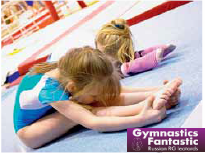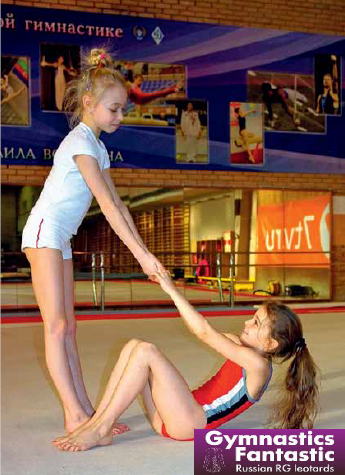Take care of your “tail”
By Oleg Vasiliev, “Gymnastics” Magazine
Squirrels, foxes, cats, dogs and other animals have chic tails. Nature left us, tailless, just several tail bones in commemoration of the past grandeur… Coccyx or tail bone is the reminder of the tail we lost during the evolution.
In spite of its even more than bashful look, tail bone is an important part of our body and can be the reason of many discomforts. Sacrococcygeal joint has its own intervertebral disk with the gap for the terminal thread of the dura mater of spinal cord. By that, any injuries in this joint can influence on the work of the whole spinal cord, especially on its lower part responsible for thigh functions.
Great amount of muscles and ligaments are attached to the tail bone; they are responsible for holding the pelvic organs and bone structure stability in general. So, any pelvis slants, in case of work with the “favorite” leg predominates, influence the tail bone inevitably.

There’s also very important fact for gymnastics, which says that the tail bone is attached to the part of the muscle bundles of the gluteus maximus muscle, which is the powerful thigh extensor. That’s why any problem in the tail bone will worsen the quality of all the springs. Moreover, all the elements, connected with the leg back swings and all the elements with holding the leg behind, will suffer (arabesque, attitude etc.).
And there’s more to come. Fascia structures, keeping the spine in a vertical position, are also attached to the tail bone.
- While arching backward, all these connective-tissue structures strain. In case of the injured tail bone, all the arches backward will become a problem for a gymnast. And this means that the whole class of the elements will suffer - bridge, front and back handspring, springs in the arch etc.
- While bowing forward, all these structures stretch, on the contrary. The famous element “fold” can be an example of this position.

By that, if a gymnast has an injured tail bone, she can’t normally do neither arch backward, nor bow front, because the tone in fundamental gymnastics composition “handstand snapdown and back” suffers. That’s why a gymnast with the coccygeal dystonia looks leaden and blocked.
Tail bone pain or coccyalgia is typical for “women gymnastics”, very often it proceeds without any symptoms. But suddenly the coach sees that gymnast’s movements are hindered and her springs, splits and bridge are not well done, for some obscure reason.
Diagnosis can be assumed while touching the tail bone. And unfortunately, it’s the main method, as the X-ray and MRT shows only serious injuries in the tail bone, which are rear in rhythmic gymnastics.
What is the tail bone injury mechanism? Falls on the tail bone and long-lasting microtraumas, caused by the leg swings with high amplitude and work with the “favorite” leg, are typical for gymnasts.
Tail bone dislocation is rear in gymnastics. In most cases, the reason of coccygeal deficiency is in injuries and strains of the coccygeal muscular-ligamentous apparatus, it can be treated by manual therapy.
All the tail bone injuries are within the competence of traumatologists, orthopedists and bone doctors.
Take care!

P.S. You may order beautiful kids gymnastics leotards at our website.
- Find your own leo among our clothes for gymnastics.
01 Sep 2016 at 06:00
01 Sep 2016 at 06:00
01 Sep 2016 at 06:00
Like it? Tell your friends
















